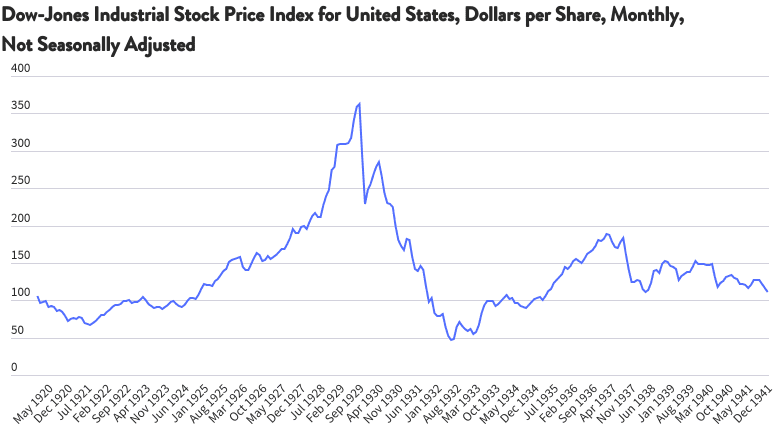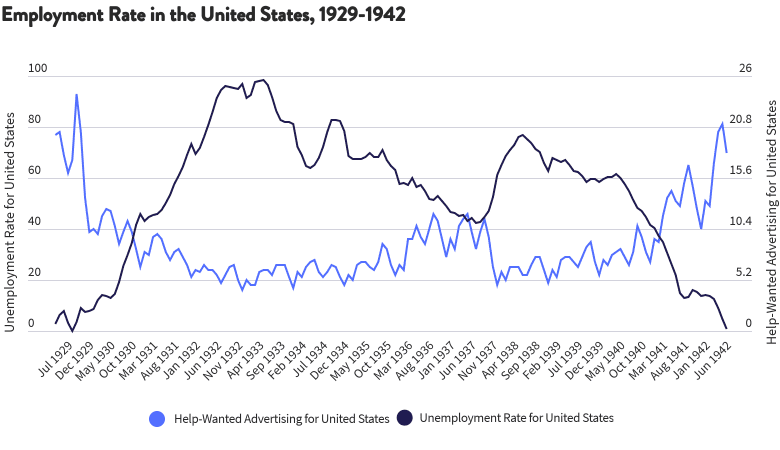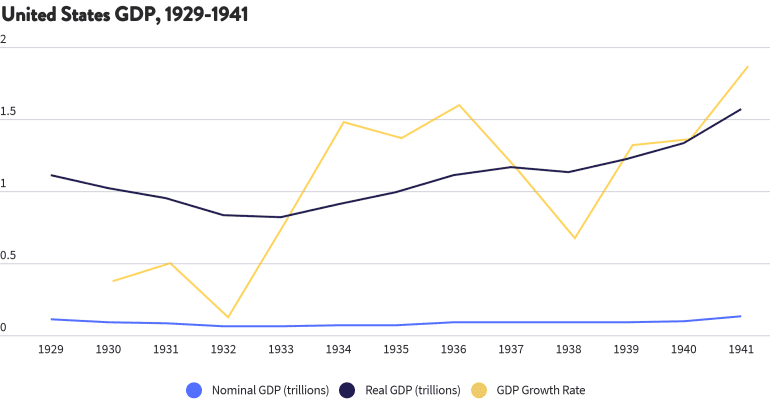An economic depression is a downturn in the economy. It’s a period where economic activity suddenly declines. Unemployment skyrockets and production slows down. Although a depression shares some similarities with a recession, it lasts longer and has more devastating results.
During a depression, we see a drastic and sustained drop in the country’s real Gross Domestic Product (GDP). Real GDP measures goods and services produced by an economy in a year.
MoneyGeek’s guide dives deeper into this economic event, using the Great Depression of 1929 to 1939 as its primary example. We’ll also flesh out typical characteristics of an economic depression and how it differs from a recession.
















